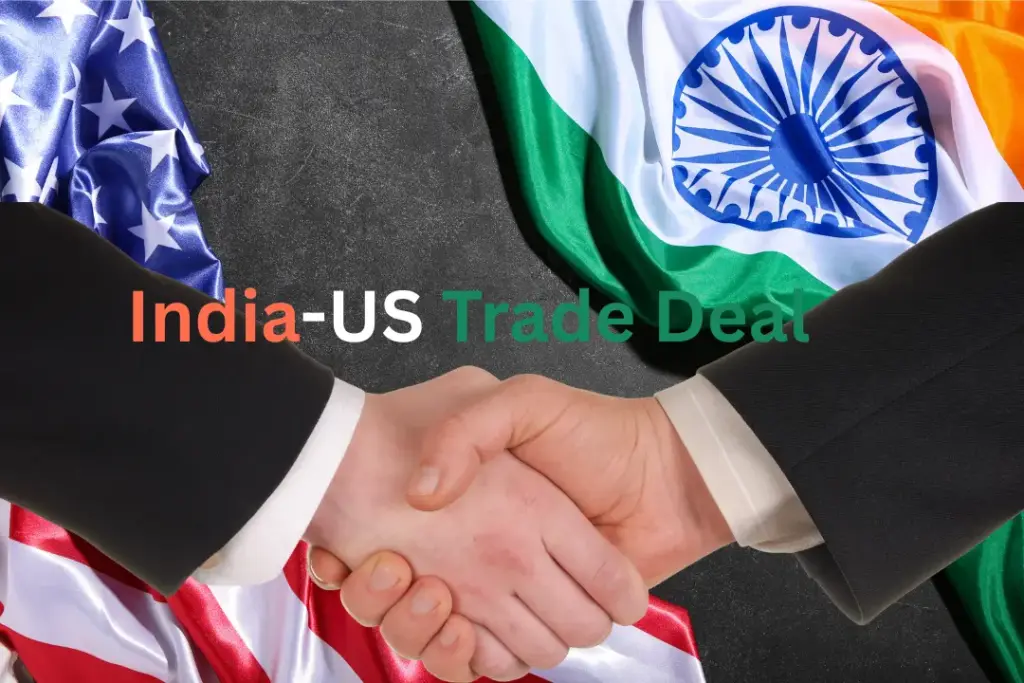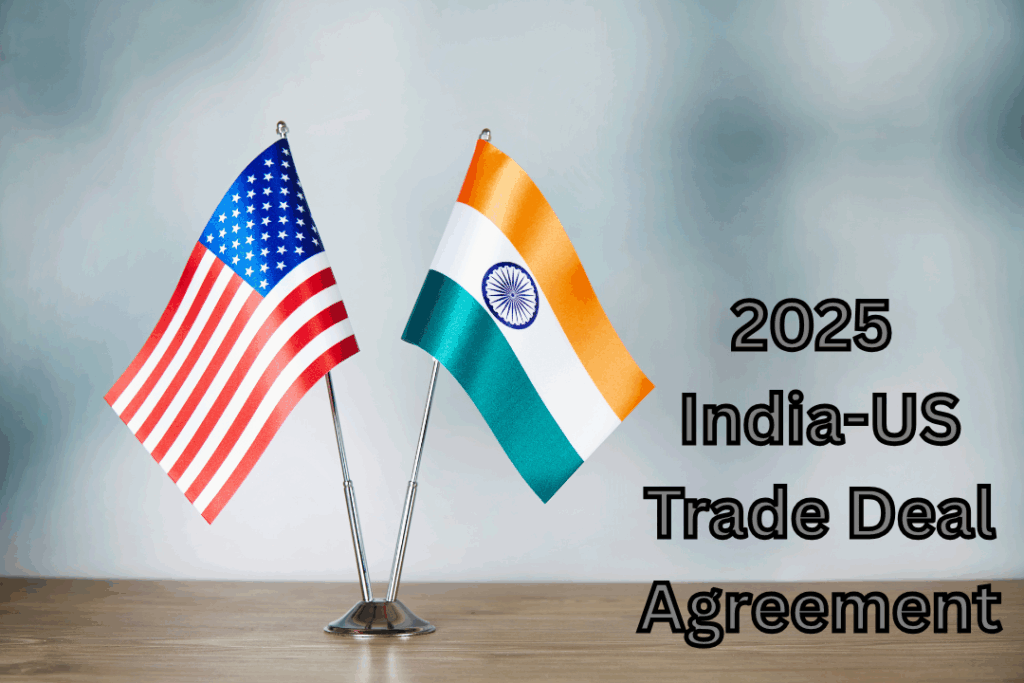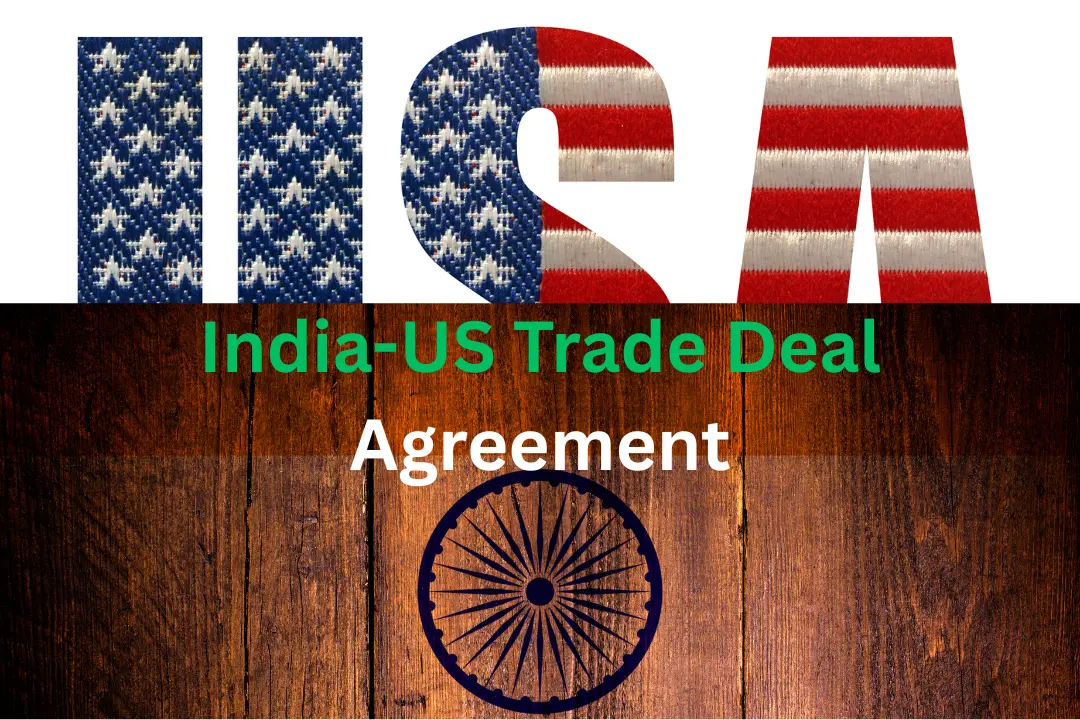The 2025 India-US Trade Deal Agreement is not just another bilateral handshake. It’s a transformative policy shift that is already sending ripples across both economies and across the world. With global attention focused on the implications of this trade pact, everyone from policymakers to stock market investors is asking: What’s going to happen next?
In this in-depth analysis, we’ll break down how the deal impacts:
- India’s and America’s economic landscape
- Global stock markets and sectors
- Tariff policies and trade dynamics
- Geopolitical and diplomatic relations
Let’s explore how the 2025 India-US trade deal is set to change the game.
Table of Contents
What Is the India-US Trade Deal Agreement 2025?

At its core, the India-US Trade Deal Agreement 2025 is a bilateral pact aimed at boosting economic cooperation between the two nations. The deal covers a wide range of industries including agriculture, energy, defense, IT, and pharmaceuticals.
One of the key highlights is the rollback or reduction of certain US tariffs on Indian goods, particularly textiles, automotive parts, and pharmaceuticals. In return, India has promised to open up its markets more fully to American agricultural products and digital services.
The deal has been in discussion since 2020, when President Donald Trump visited India, marking a new era of trade cooperation. Now, in 2025, this vision has finally taken form.
Major Components of the Deal
- Tariff Reductions: Mutual rollback of protectionist tariffs.
- Digital Trade Policies: India agreed to certain data-sharing protocols to enable smoother e-commerce operations.
- Agricultural Access: The deal allows U.S. agricultural products like almonds, dairy, and wine to enter the Indian market with fewer restrictions, boosting trade opportunities for American farmers.
- Pharmaceutical Recognition: U.S. has agreed to recognize more Indian pharma certifications.
- Defense Contracts: Collaboration on defense tech manufacturing in India under “Make in India.”
- Green Energy Collaboration: Joint ventures in clean energy including solar, wind, and hydrogen projects.
- Student and Work Visas: Easier access for Indian students and professionals through improved visa agreements.
Economic Impact on India
1.Export Boost:
Reduction in tariffs will make Indian goods more attractive in the American market. Sectors like:
- Textiles
- Pharmaceuticals
- IT services will likely see a major export surge.
2. Foreign Direct Investment (FDI):
Clearer trade frameworks make India a more appealing destination for American investors. Startups and major tech companies are likely to attract increased investment as trade relations between India and the U.S. strengthen.
3. Employment Generation:
More exports and investments will likely translate into more jobs across manufacturing and tech sectors.
4. Strengthening the Rupee:
Improved trade balances and FDI inflow can positively affect the Indian rupee, increasing investor confidence.
5. Innovation and Technology Transfer
Joint research and innovation projects in AI, biotech, and defense technology are expected to emerge from this deeper cooperation.
Economic Impact on the U.S.
1.Agricultural Sector Growth:
American farmers and agro-exporters will benefit by entering India’s vast consumer market.
2. Energy Sector:
The deal includes collaboration on LNG and oil exports from the U.S. to India, strengthening American energy exports.
3. Pharma and Healthcare:
Reduced restrictions on Indian pharma imports allow the U.S. to source more affordable generic drugs, reducing domestic healthcare costs.
4. Digital Economy Expansion:
Tech companies like Amazon, Microsoft, and Google can scale operations in India with fewer restrictions.
5. Increased Demand for Services
Legal, financial, and educational institutions in the U.S. may see increased demand from Indian clients due to smoother regulatory pathways.
Impact on the Global Stock Market

Indian Markets
The Sensex and Nifty 50 have already started reacting positively. Sectors likely to benefit:
- IT & Software
- Pharmaceuticals
- FMCG
- Automobiles
- Defense stocks
U.S. Markets:
Wall Street is showing optimism, particularly in:
- Agricultural shares (e.g., Deere & Co, Archer Daniels Midland)
- Energy companies exporting LNG
- Tech giants with a strong India presence
Global Markets:
Global investors are seeing India as a more open market. Countries with trade dependency on India or the U.S. are re-calibrating their own trade policies.
What About US Tariffs?
US Tariffs have been a pain point for Indian exporters for years. Under this new agreement, the U.S. has agreed to remove or lower duties on nearly $7 billion worth of Indian exports.
This includes:
- Textile products
- Auto parts
- Gems and jewelry
This move is expected to bring relief to Indian MSMEs and exporters who faced challenges during the previous trade friction period.
Political and Strategic Impact
India’s Strategic Position Strengthens:
India is quickly positioning itself as a strong alternative to China in global supply chains, attracting attention from investors and manufacturers worldwide. This deal further cements that position.
President Donald Trump’s Legacy
With Trump once again playing a key role in the development of this trade deal, it contributes positively to his political narrative of rebuilding strong bilateral ties and securing better trade outcomes for American workers.
Indo-Pacific Stability
Greater India-US cooperation is seen as a strategic counterweight to China’s influence in the Indo-Pacific region.
Stronger Multilateral Influence
Both countries could use this improved trade relation to gain more sway in forums like the G20, WTO, and Indo-Pacific Economic Framework.
Impact on Key Industries
Agriculture
Indian farmers may face competition from cheaper U.S. imports, but agro-tech investments and partnerships can help modernize Indian farming.
Pharma
Indian pharma firms benefit from greater U.S. market access. Generic drug makers are likely to see a big jump in sales as demand grows and market access improves.
IT and Tech
Data-sharing norms and smoother digital trade pave the way for cross-border tech innovation. Indian IT companies may see more contracts from the U.S.
Auto and Manufacturing
“Make in India” initiatives will get a boost from joint manufacturing projects with American companies.
Renewable Energy
Joint solar, wind, and hydrogen projects will boost India’s green energy push while creating new export opportunities for U.S. clean energy firms.
Risks and Challenges
1.Domestic Industry Pushback
Some Indian sectors fear being outcompeted by U.S. imports, especially agriculture.
2. Implementation Delays
Policy shifts are slow, and there might be delays in implementing some aspects of the agreement.
3. Currency Volatility
Despite stronger trade ties, short-term forex volatility could impact imports.
4. Political Opposition
Both in India and the U.S., political parties and lobby groups may resist certain parts of the deal.
What Should Investors Do?
If you’re an investor, this is the time to:
- Watch trade-related stocks
- Look for FDI news and global funding announcements
- Track USD-INR currency trends
- Focus on sectors that benefit from export growth
FAQS:
1. How will the 2025 India-US Trade Deal impact the Indian stock market?
ANSWER: The India-US Trade Deal 2025 is expected to boost investor confidence in sectors like IT, pharma, defense, and manufacturing. Stock indices like Nifty 50 and Sensex may see bullish trends, especially for export-focused companies.
2. What effect will the US tariffs rollback have on Indian exports and MSMEs?
ANSWER: The removal or reduction of US tariffs will benefit Indian exporters, particularly MSMEs in textiles, gems, auto parts, and pharma. It’s likely to increase India’s global trade share and stock performance in these sectors.
3. Can this trade agreement affect the USD-INR forex rate?
ANSWER: Yes The forex market might experience lower volatility and INR strength due to higher FDI inflows and improved trade balance. Traders can watch for better USD-INR trading opportunities.
4. What sectors in the US will benefit from the India-US trade Deal agreement?
ANSWER: The US agricultural, energy, and tech sectors will benefit the most. Companies involved in LNG exports, e-commerce, and digital services will gain expanded access to India’s market.
5. Is this trade deal a good signal for global stock and forex investors?
ANSWER: Absolutely.This deal boosts global investor confidence in both countries. It creates a favorable environment for cross-border investing, especially in forex pairs like USD/INR, stocks of trade-related industries, and multinational companies.
6. How does the India-US Trade Deal affect foreign institutional investors (FIIs)?
ANSWER: The improved trade environment encourages FIIs to increase investments in Indian equity and debt markets, especially in sectors like energy, tech, and manufacturing. This may result in higher market liquidity and long-term capital inflows.
7. Will the trade agreement boost Make in India and manufacturing growth?
ANSWER: Yes, the deal supports Make in India by encouraging U.S.-India joint ventures in defense, electronics, and clean energy. It also promotes local manufacturing by improving technology transfer and reducing dependency on Chinese imports.
8. What are the long-term forex market implications of this trade agreement?
ANSWER: In the long run, the trade deal could stabilize the USD-INR pair due to improved trade balances and reduced current account deficits. It also encourages more currency hedging and investment in forex derivatives among Indian businesses.
9. How will the India-USA News about the 2025 trade deal influence market sentiment?
ANSWER: Breaking India USA news about the 2025 trade agreement significantly impacts investor sentiment, especially in the stock and forex markets. Positive developments may lead to short-term rallies, increased trading volumes, and improved market confidence globally.
Final Thoughts
The 2025 India-US Trade Deal Agreement is not just about economics it’s a statement of strategic partnership. The ripple effects will be seen not only in trade numbers but also in geopolitical influence, stock market performance, and future economic policy.
Whether you’re following India USA news, watching US tariffs development, or observing President Donald Trump in India, one thing is clear: This agreement is a major turning point.
